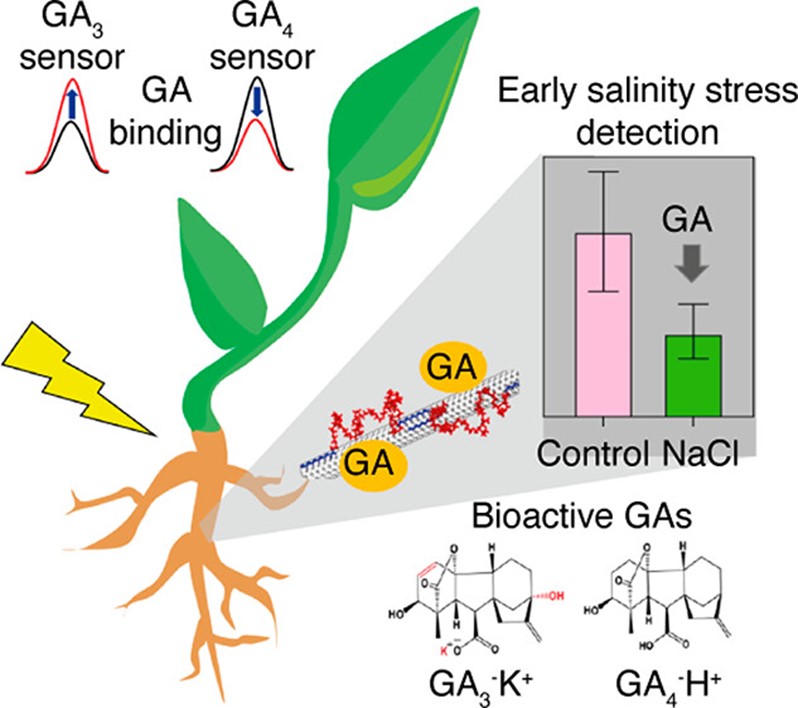(365c) Near-Infrared Fluorescent Carbon Nanotube Sensors for the Plant Hormone Family Gibberellins
AIChE Annual Meeting
2023
2023 AIChE Annual Meeting
Topical Conference: Sensors for Sustainability
Student Competition in Sensors (Sponsored)
Monday, November 6, 2023 - 1:06pm to 1:24pm
Gibberellins (GAs) are a class of phytohormones, important for plant growth, and very difficult to distinguish because of their similarity in chemical structures. Herein, we develop the first nanosensors for GAs by designing and engineering polymer-wrapped single-walled carbon nanotubes (SWNTs) with unique corona phases that selectively bind to bioactive GAs, GA3 and GA4, triggering near-infrared (NIR) fluorescence intensity changes. Using a new coupled Raman/NIR fluorimeter that enables self-referencing of nanosensor NIR fluorescence with its Raman G-band, we demonstrated detection of cellular GA in Arabidopsis, lettuce, and basil roots. The nanosensors reported increased endogenous GA levels in transgenic Arabidopsis mutants that overexpress GA and in emerging lateral roots. Our approach allows rapid spatiotemporal detection of GA across species. The reversible sensor captured the decreasing GA levels in salt-treated lettuce roots, which correlated remarkably with fresh weight changes. This work demonstrates the potential for nanosensors to solve longstanding problems in plant biotechnology.


